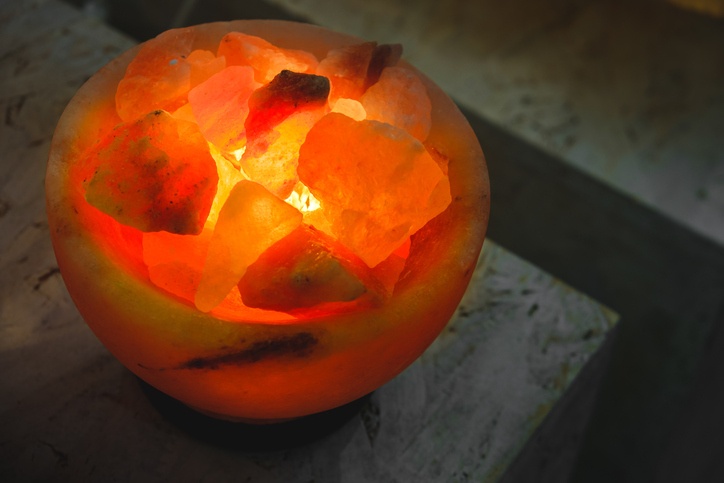
While most people recognize the dangers posed by outdoor environmental pollutants, awareness of the many factors that compromise indoor air quality are not as well-known. Because we spend so much of our time inside – an average of ninety percent – everyone can benefit from the understanding of how to purify and maintain healthy air in the home and office.
Before you begin to improve indoor air quality, you may want to invest in an indoor air quality monitor – such as this popular Multi Tester Indoor Air Quality Monitor. Consistently measuring air quality is the best way to ensure the changes you make are yielding improvements.
1. Increase Ventilation
This advice may seem simple at first, but there is more to improving the ventilation in your home or office than just opening a window. Outdoor air may still contain pollution that you don’t want in your living spaces. Instead, consider installing trickle vents (such as these) to purify and cycle the air you breathe indoors.
2. Natural Air Conditioning
While it may seem like a better option than running your central cooling system in the summer months, resist the temptation to open all of your windows which will allow pollutants to enter your living space. Instead, try some of these tips to cool your home naturally.
– Use ceiling fans
– Install heat-blocking window treatments
– Minimize use of heat-producing appliances
– Grow plants for shade
For more information on these tips and more, check out this article.
3. Indoor Air Filters
HEPA filters are an effective way to remove unwanted contaminants from indoor air. For use in both central air systems and portable air purifiers, HEPA filters should be changed regularly for maximum health benefits.
If you’d like to invest in an indoor air purifier, you may be interested to read our review of three of the best on the market. Hint: this Germ Guardian 3 in 1 Air Purifier is the best budget option.
4. Eliminate the Source
Excessive moisture, dust build-up, smoking, and the use of chemical products like paint, detergents, and synthetic fibers are among the most common causes of indoor air pollution. Try to eliminate as many of these sources from your living spaces as possible and always be on the lookout for all-natural alternatives to chemical-laden household items.
5. Use Beeswax Candles
If you like to burn candles for natural light, avoid paraffin candles which release petroleum byproducts into the air. Instead, opt for beeswax candles. Beeswax burns clean and offers the added benefit of ionizing air to neutralize toxic compounds and other contaminants.
As an added bonus, beeswax candles burn slowly, so you have to replace them less often. Try some of these candles from Bluecorn Naturals.
6. Salt Lamps
Himalayan pink salt is another natural ionic air purifier that pulls toxins from the environment and neutralizes them. Add an Himalayan pink salt lamp to any room in your home or office for both functionality and decoration.
If you don’t already own a Himalayan pink salt lamp, you don’t know what you’re missing! For more information on the health benefits of HPS lamps, read this article.
Want to try purifying your home air with salt lamps? You can purchase them from this page on Amazon.
7. Activated Charcoal
Another great way to purify indoor air is with activated charcoal. Also known as active carbon or simply carbon, activated charcoal is odorless and highly-absorptive. Carbon air filters can be purchased from many supermarkets and home improvement stores or from here on Amazon.
8. Houseplants
Plants are Mother Nature’s air purifiers. Try growing any of these houseplants to filter toxins from the air in your home or office:
– Butterfly Palm (Dypsis lutescens) – other names include Areca Palm, Golden Cane Palm, and Bamboo Palm – grows in bright, indirect light (more…)
– Lady Palm (Rhapis excelsa) – also known as the Broadleaf Lady Palm – adaptable, but prefers bright, indirect light (more…)
– Rubber Tree (Ficus elastica) – other names include Rubber Fig, Rubber Bush, Rubber Plant – grows in bright, indirect light and dislikes drafty locations (more…)
– Cornstalk Dracaena (Dracaena fragrans) – also known as the Corn Plant or simply Cornstalk – thrives with a mix of indirect light and shade (more…)
– Peace Lily (Spathiphyllum) – genus of about 40 different species – prefers moderate, indirect sunlight (more…)
– Chrysanthemum (Dendranthema grandiflora) – commonly called Pot Mums – loves bright sun (more…)
– Golden Pothos (Epipremnum aureum) – also called Devil’s Ivy, Money Plant, Silver Vine, Centipede Tongavine, frequently mislabeled as Philodendron – low or bright light (more…)
– English Ivy (Hedera helix) – often called Common Ivy, European Ivy, or just simply Ivy – (more…)
– Chinese Evergreen (Aglaonema) – over 20 different species – shade or indirect light depending on species (more…)
Further Reading: 13 Best Houseplants To Clean Indoor Air
Most of these plants are readily available at any home improvement store or nursery, are fairly easy to take care of, and will liven up your living space while naturally cleaning the air you breathe.
